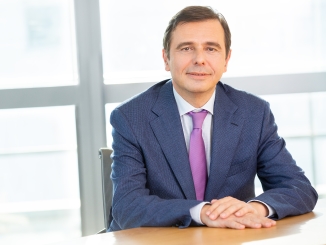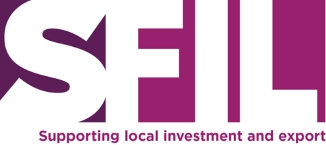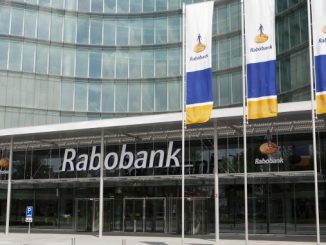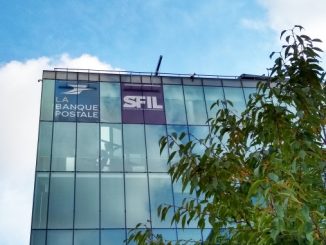
Loans to local government bodies large and small are behind SFIL’s green bond issuance, and the French group anticipates complementing this with social lending, according to CEO Philippe Mills and colleagues.
Head down to La Rochelle and its environs along France’s Atlantic coast for a well deserved post-lockdown holiday this summer, and the more environmentally-minded among you could find yourself connecting with SFIL’s inaugural green bond.
One of the loans among the use-of-proceeds of the €500m eight year deal issued in November 2020 is a green loan originated by La Banque Postale and refinanced by SFIL to the local public electricity distribution service of Charente-Maritime (SDEER) to help finance the deployment of 57 electric vehicle fast-charging stations across the department. The €2.1m investment, of which 25% is provided by the partner banks, expands the Nouvelle-Aquitaine region’s MObiVE network into the agglomerations and attractions of the department, with a view to allowing tourists to charge their vehicles while partaking of the local sites and hospitality.
According to SDEER president François Brodziak, the loan offered by La Banque Postale and refinanced by SFIL was the only green loan on offer.
“In addition to the loan rate, which is very attractive,” he adds, “we were seduced by the idea of opting for financing that was also in line with national guidelines concerning the ecological transition.”
The 0.01 tonnes of reduction in CO2 from the loan contributes to a total of 4,572 tonnes per year for the pool refinanced by SFIL’s green bond, according to its first allocation and impact report, published in November 2021.
“The green and social loans we provide are an important part of the overall sustainability strategy that we have developed over recent years,” says François Laugier, SFIL deputy CEO.
Later in November, SFIL rounded off its 2021 funding programme with the group’s third green bond, a €500m 10 year benchmark that was 1.5 times covered despite hitting a market characterised by increased volatility linked to the pandemic rebound and macroeconomic uncertainty.
 “The success of this green transaction confirms our commitment to be a driving force for a sustainable world through our ability to finance territorial green projects,” says Philippe Mills, CEO of SFIL (pictured).
“The success of this green transaction confirms our commitment to be a driving force for a sustainable world through our ability to finance territorial green projects,” says Philippe Mills, CEO of SFIL (pictured).
“One of our key objectives,” he adds, “is to provide access to green finance to small municipalities — we are now providing green loans with volumes as low as €300k.”
Indeed, among the use-of-proceeds of the first green bond are 14 loans that financed investments by municipalities with fewer than 5,000 inhabitants. But in total, entities serving more than six million people across l’Hexagone have benefited from loans under the transaction.
All the loans to French local public authorities behind green bonds from SFIL and its covered bond issuer Caisse Française de Financement Local (Caffil) are originated by La Banque Postale — a fellow Groupe Caisse des dépôts et consignations (CDC) member.
Post-pandemic relaunch
According to figures from Eurostat, local public sector finances have withstood the pandemic well, with revenues dropping just around 2% for the year 2020 versus 2019 and the sector posting a deficit of only 0.2% of GDP for the year.
Some €30bn of France’s €100bn economic recovery plan — “France Relance” — has been set aside to finance the ecological transition, including improvements in the energy performance of buildings and soft public transportation, much of it through local government.
“French local authorities will play a key role in the ecological transition over the coming years,” says Mills at SFIL. “As the leading French lender to local authorities in France, we will make a significant contribution towards financing these investments.”
SFIL Green Bond 2020/2028 impact reporting: reduction in CO2 emissions and other key impact figures

Source: SFIL allocation and impact report, November 2021
Some €36bn of investments will meanwhile focus on social and territorial cohesion, including €6bn of additional investments in the healthcare sector. This expenditure will come on top of the large share of local authority investment that already has clear social objectives — for example, education represents around 15% of French local government investments.
“Looking ahead,” adds Mills, “we see a lot of interest from local authorities for financial products with clear social objectives.”
On top of the green loans SFIL already provides in partnership with La Banque Postale, local authorities have shown an increasing interest in a social loan product, and SFIL is looking at ways to expand social bond issuance beyond the public hospital sector.
“One of the goals we have for this year is to extend as much as possible our issuance capacity on this side, because the market is deep and we have the capacity to issue more,” says Olivier Eudes, head of ALM and financial markets at SFIL. “This means enlarging the production and qualification of ESG assets, so the strategy is to have a close look at what kind of social activity we may extend to the local authorities besides the green activity.”
Green and social bond issues are anticipated within a funding programme for 2022 that should see €2bn from SFIL and €3bn-€4bn from Caffil. The group’s last social bond was in April 2021, a €750m eight year covered bond from Caffil that attracted more than €1.5bn of orders from 60 different investors.
“As the first lender to public hospitals in France, we are proud to actively contribute to the financing of this sector in this period of a global pandemic,” says Mills. “We have seen a big shift in the investor base, with more and more investment mandates with a specific focus on social bond investments.”
Sponsored by




